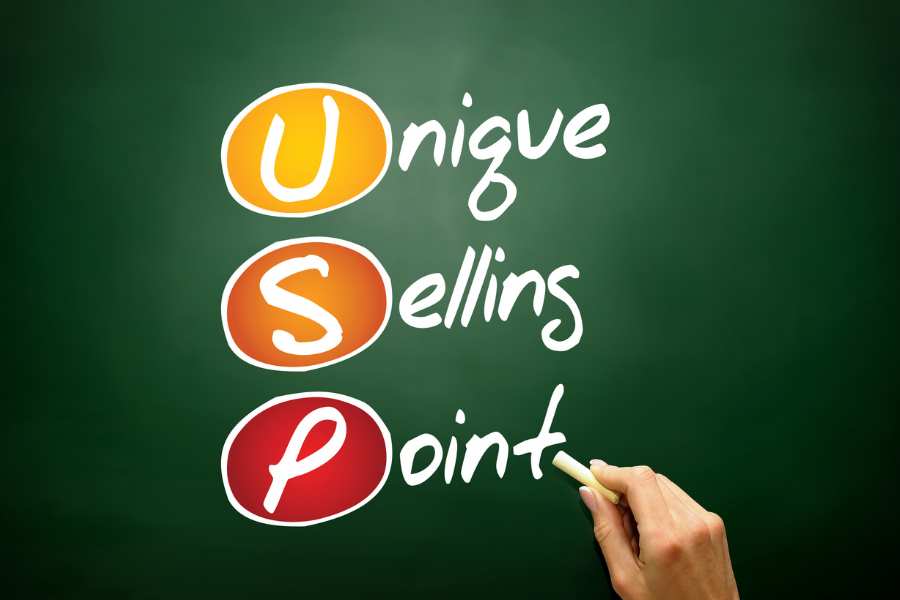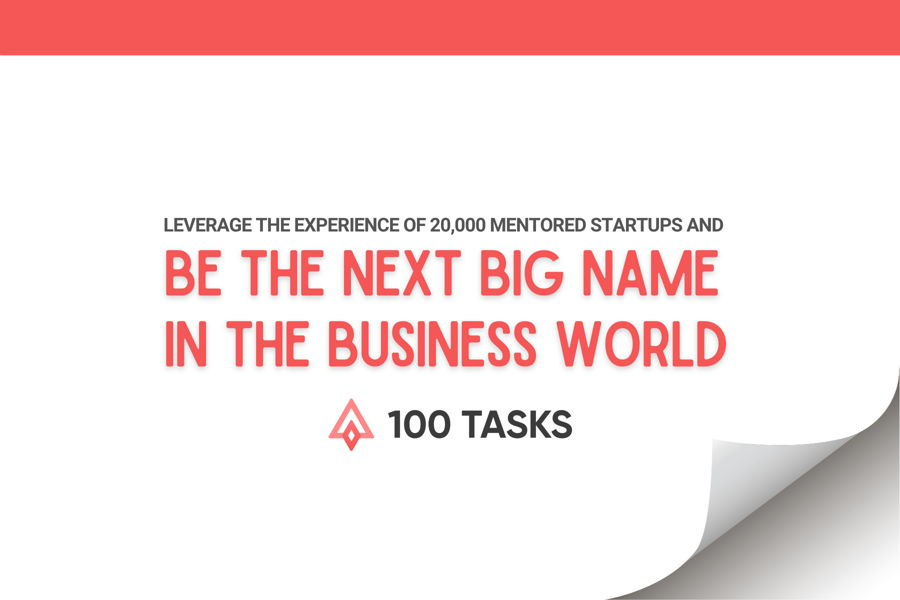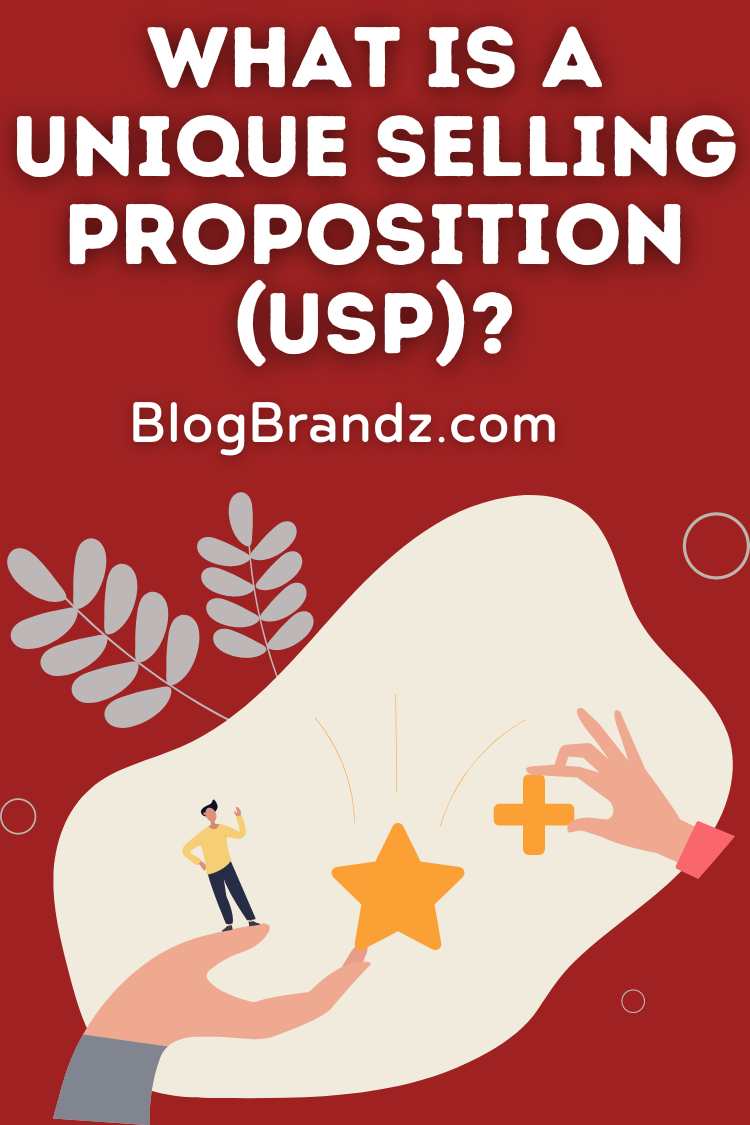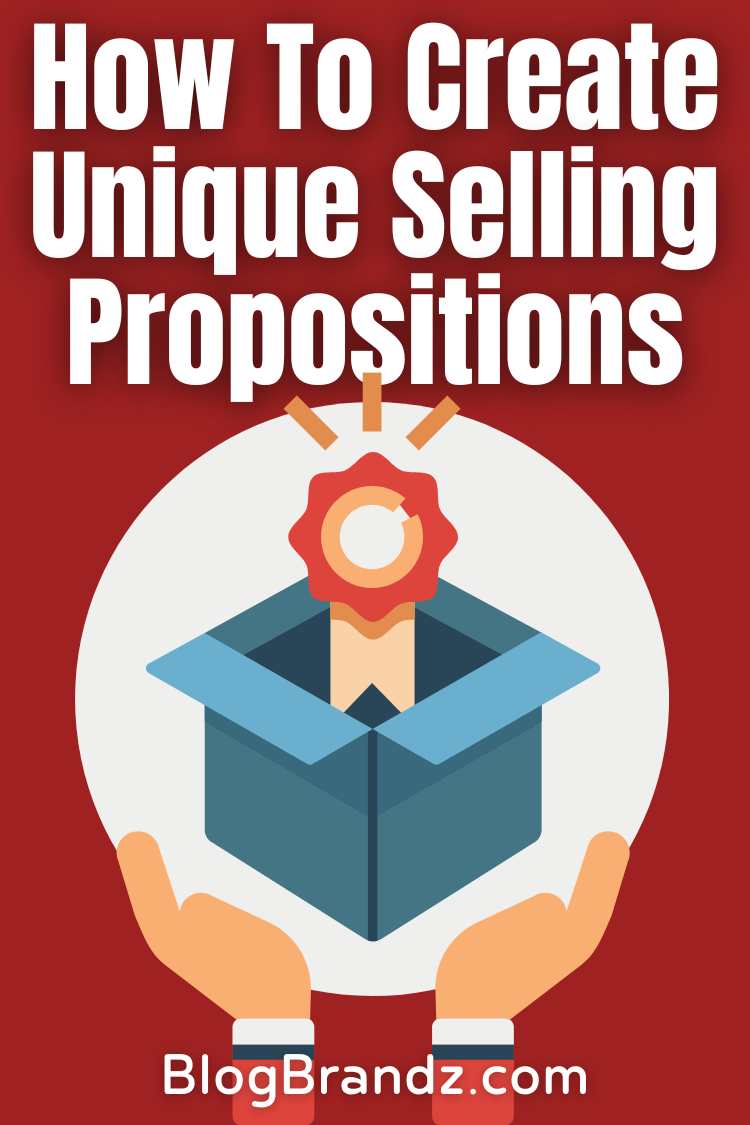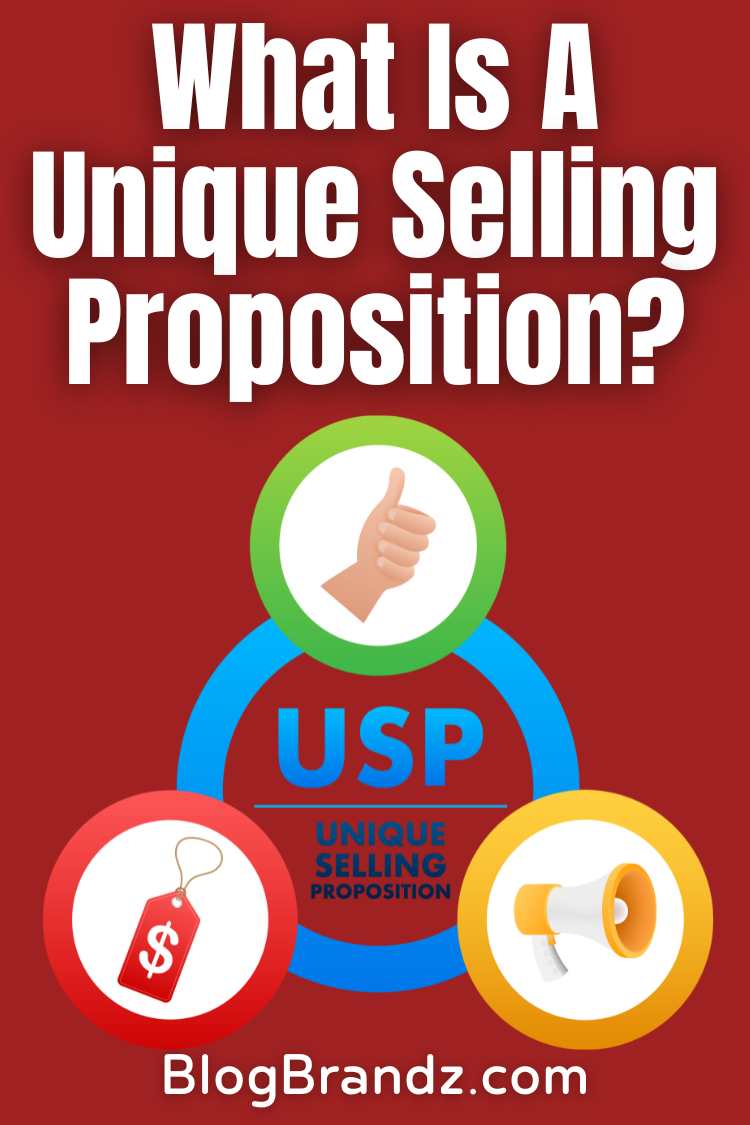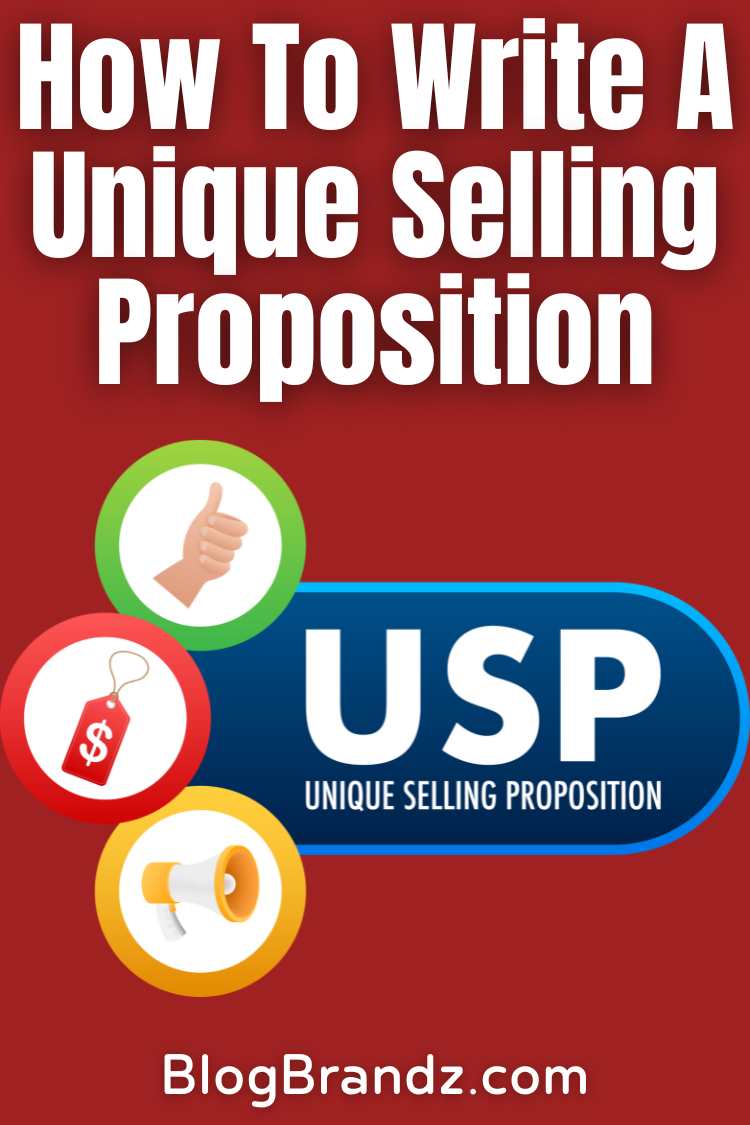Learn how to write a compelling Unique Selling Proposition (USP) that sets your business apart with these tips and examples to create a memorable USP.
The concept of the Unique Selling Proposition was developed by Rosser Reeves in the 1940s.
Television advertising led to the unique selling proposition (USP), a strategy in which advertisers did what focused on identifying and promoting a specific, unique feature or benefit of their product that set it apart from competitors.
Advertisers would then focus their messaging on this unique aspect, emphasizing it repeatedly in their commercials to create a memorable impression on consumers.
The goal was to persuade consumers that the product’s unique feature made it superior and worth purchasing. This approach became a cornerstone of modern advertising and marketing, influencing how products are promoted to this day.
Contents
- What is a unique selling proposition?
- Unique selling proposition vs. unique value proposition
- Why does a business analyze and identify its unique selling proposition?
- What do businesses often use as the basis for developing a unique selling proposition?
- How to write a unique selling proposition
- Resources for creating a unique selling proposition
- Unique selling proposition examples
- Business tips & tools
What is a unique selling proposition?
What does the term unique selling proposition (USP) refer to? A Unique Selling Proposition is an attribute of your product or brand that sets it apart from competitors in the eyes of customers.
It highlights the unique benefits or value that the offering provides, which other alternatives in the market do not offer or do not emphasize as strongly, and is crucial for effective positioning and messaging in the marketplace.
A primary reason that it is important for a business to identify its unique selling proposition is that it answers the question, “Why should I choose this product over others?”
A compelling Unique Value or Unique Selling Proposition is the building block of a company’s marketing strategy. It is used in marketing and advertising to differentiate a product or brand, attract customers, and build a competitive advantage.
The USP serves as the foundation for all marketing and advertising efforts, guiding the messaging and positioning of the brand in the market. It helps the company communicate its unique value proposition to customers, differentiate itself from competitors, and ultimately drive sales and business growth.
Unique selling proposition vs. unique value proposition
What is the main difference between a unique selling proposition (USP) and a value proposition? Understanding the difference between a unique value proposition (UVP) and a unique selling proposition (USP) is crucial for developing a comprehensive marketing strategy.
The Unique Selling Proposition (USP) and Unique Value Proposition (UVP) are related concepts but differ in focus and scope. Both are important for effective marketing and messaging, but the UVP is broader and more holistic, while the USP is more focused and specific.
Unique Selling Proposition (USP):
Focus: The USP focuses on a specific, unique feature or benefit of a product or service that sets it apart from competitors.
Scope: It is often narrow and specific, highlighting a single unique aspect that makes the product or service stand out.
Unique Value Proposition (UVP):
Focus: The Unique Value Proposition (UVP) emphasizes the overall value that a product or service provides to customers, including its unique features, benefits, and the problem it solves.
Scope: It is broader and more holistic, encompassing all the reasons why a customer should choose a particular product or service over alternatives.
While the USP highlights a specific aspect that differentiates a product or service, the Unique Value Proposition provides a more comprehensive view of the overall value that the offering delivers to customers.
Why does a business analyze and identify its unique selling proposition?
A business analyzes and identifies its Unique Selling Proposition (USP) for several reasons:
- Competitive Advantage: It helps the business differentiate itself from competitors in the market by highlighting unique features or benefits that competitors do not offer or emphasize as strongly.
- Customer Attraction: A strong USP can attract customers by clearly communicating the value and benefits of the product or service, making it more appealing compared to alternatives.
- Brand Positioning: It helps the business position its brand in the minds of consumers, creating a distinctive identity that sets it apart from competitors.
- Marketing Strategy: The USP forms the basis of the business’s marketing strategy, guiding messaging and communication to effectively reach and resonate with target customers.
- Customer Loyalty: A unique and compelling USP can build customer loyalty by creating a strong connection between the brand and its customers, leading to repeat business and referrals.
- Business Growth: Identifying and leveraging a strong USP can lead to increased sales, market share, and overall business growth as the brand becomes more competitive and appealing to customers.
What do businesses often use as the basis for developing a unique selling proposition?
Businesses often use several key elements as the basis for developing a Unique Selling Proposition (USP), including:
- Market Research: Understanding customer needs, preferences, and pain points to identify opportunities for differentiation.
- Competitor Analysis: Analyzing competitors’ products, services, and marketing strategies to identify gaps or areas where the business can offer something unique.
- Unique Features or Benefits: Highlighting specific features or benefits of the product or service that are distinct from competitors and valuable to customers.
- Customer Feedback: Incorporating feedback from customers to understand what they value most and how the business can meet or exceed their expectations.
- Brand Identity: Leveraging the brand’s identity, values, and personality to create a USP that resonates with the target audience.
- Industry Trends: Staying informed about industry trends and innovations to identify opportunities for differentiation and staying ahead of competitors.
By leveraging these elements, businesses can develop a USP that effectively differentiates them from competitors and resonates with their target audience, helping to attract and retain customers.
How to write a unique selling proposition
When diving into product marketing, companies seek to uncover their Unique Selling Proposition (USP), the special element that distinguishes their product. This uniqueness can take various forms, such as lower pricing, more convenient packaging, superior taste or smell, or longer-lasting quality.
Imagine encountering a company that offers no compelling reason to buy from them other than a lackluster “buy from us” pitch – would you be inclined to make a purchase?
Your USP is crucial; it encapsulates your business’s essence in a single, powerful statement. It focuses on your business’s core identity and ensures that your brand is top of mind for consumers in need of your products or services.
Many businesses fail to provide a compelling answer to the consumer question: “What’s in it for me?” Only a handful ensure that their USP prominently features on their landing and home pages.
If you can’t communicate the unique value proposition you offer, your visitors will swiftly move on to a competitor who can. To write a compelling Unique Selling Proposition (USP):
- Identify your target audience and their needs.
- Determine what sets your product/service apart from competitors.
- Focus on a single, clear benefit that resonates with your audience.
- Be specific and avoid generic statements.
- Keep it simple, memorable, and concise.
- Compellingly communicate the unique benefit.
- Ensure it aligns with your brand and values.
- Test your USP with your target audience for effectiveness.
Creating a Unique Selling Proposition is about more than standing out; it’s about captivating your audience. It should guide customers to choose you over the competition.
The unique selling proposition of a product or service can provide a competitive advantage that competitors cannot easily copy. Start by identifying your strengths, quirks, or specialties that make you unlike anyone else in your field.
Maybe it’s a revolutionary product, top-notch customer service, a bold and memorable brand identity, or a deep commitment to sustainability and social responsibility.
Your USP should be more than just a tagline; it should be a promise that speaks directly to your target audience, compelling them to choose you. It’s about being so uniquely irresistible that customers can’t help but flock to you.
By defining your USP, you’re not just setting yourself apart in the market; you’re creating a brand that resonates with customers and keeps them coming back for more.
Crafting your USP involves asking yourself a series of critical questions:
- What unique aspects of my business, product, or service differentiate it from the competition?
- Which of these aspects hold the most significance for my customers?
- Which aspects are difficult for competitors to replicate?
- Which of these aspects can be easily communicated and understood?
- Can I distill these unique, meaningful qualities into a memorable message (USP) for my business or brand?
- How will I convey this message (USP) to buyers and end-users, both online and offline?
Resources for creating a unique selling proposition
Unique selling proposition mastery course
In the Unique Selling Proposition Mastery: Position to Win Course, you’ll master the art of creating a Unique Selling Proposition to dominate your market and discover how to create a brand that stands out, attracts, and retains customers.
This course will help you quickly identify your USP to build a loyal customer base and differentiate yourself from competitors.
You’ll learn effective strategies to develop a winning USP in just a few hours, harness the power of a compelling USP to skyrocket your sales, elevate your business, and gain the edge you need to outperform and outlast the competition.
Free unique value proposition generator
You can use the AISEO free unique value proposition generator to craft a distinctive proposition that effectively communicates your company’s value proposition, setting you apart from competitors and attracting your target audience.
This free USP writing tool enables you to create a compelling message that resonates with customers, helping to drive engagement and business growth.
Unique selling proposition examples
Need some inspiration? Consider these iconic examples of unique selling propositions:
Nike’s unique selling proposition
Nike’s Unique Selling Proposition revolves around its “Just Do It” slogan, which encapsulates a sense of empowerment, motivation, and inspiration.
Nike positions itself as a brand that encourages athletes and individuals to push beyond their limits and achieve their goals, emphasizing the idea that anyone can excel with the right mindset and determination.
The unique selling proposition of Nike resonates with consumers by tapping into their aspirations and aligning with the brand’s image of innovation, performance, and athleticism. Overall, Nike’s USP is about more than just selling shoes or apparel; it’s about selling a lifestyle and mindset that transcends sport.
Apple’s unique selling proposition
Apple’s Unique Selling Proposition centers around its seamless integration of hardware, software, and services, creating a unique ecosystem that offers a user experience unmatched by competitors.
Apple products are known for their high-quality design, ease of use, and innovative features, setting them apart in the market. The brand also focuses on customer-centric values, such as privacy and security, which resonate with consumers.
Additionally, Apple’s marketing emphasizes creativity, individuality, and lifestyle, positioning its products as tools for personal expression and productivity. Overall, Apple’s USP is about delivering an exceptional user experience through innovative technology and a strong brand identity.
Amazon’s unique selling proposition
Amazon’s Unique Selling Proposition is its customer-centric approach, which is reflected in its mission to be the “Earth’s most customer-centric company.” Amazon prioritizes customer satisfaction above all else, offering a wide selection of products, competitive prices, and fast, reliable delivery.
The company’s focus on convenience and efficiency has made it a go-to destination for online shopping. Amazon also leverages its vast amount of customer data to personalize recommendations and enhance the shopping experience.
Additionally, the Amazon Prime membership program further enhances customer loyalty with benefits such as free two-day shipping, streaming services, and exclusive deals. Overall, Amazon’s USP is its relentless commitment to providing the best possible shopping experience for its customers.
Coca-Cola’s unique selling proposition
Coca-Cola’s Unique Selling Proposition (USP) revolves around its iconic brand image, refreshing taste, and universal appeal. It positions itself as a beverage that brings people together, offering a moment of happiness and refreshment in every bottle or can.
Coca-Cola’s marketing emphasizes its heritage, quality ingredients, and ability to evoke positive emotions, making it more than just a soda but a symbol of happiness and togetherness.
Overall, Coca-Cola’s USP is about creating memorable experiences and emotional connections with its consumers, setting it apart from other beverage brands.
Click here to get the Ultimate Founders Checklist
Business tips & tools
- Ultimate Founders Checklist to Launch & Scale Your Startup
- Best Business Courses To Learn Entrepreneur Skills
- How To Find and Research Your Niche Market
- How To Find Product-Market Fit for Market Success
- How to Scale and Grow Your Solopreneur Business
- How to Build a Successful Freelancer Business
- How to Start Creating an Online Presence for Your Business
- 10 Steps To Create a Startup Business Plan In Entrepreneurship
- How To Write The Perfect Elevator Pitch For Investors
- Startup Funding Demystified: Your Roadmap to Financial Success
- How to Create a Compelling Company Vision as an Entrepreneur
© 2024, Priya Florence Shah. All rights reserved.
Priya Florence Shah is a bestselling author and an award-winning blogger. Check out Devi2Diva, her book on emotional self-care for women. In her spare time, Priya writes science-fiction novels and poetry and chills with her two-legged and four-legged kids.
Discover more from Business & Branding Tips
Subscribe to get the latest posts sent to your email.








